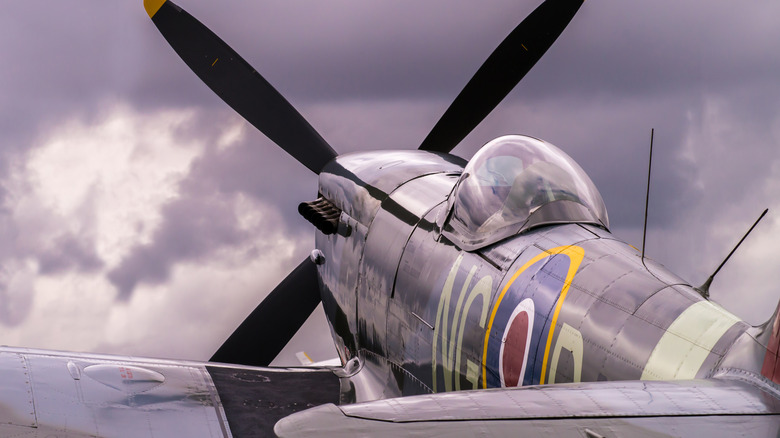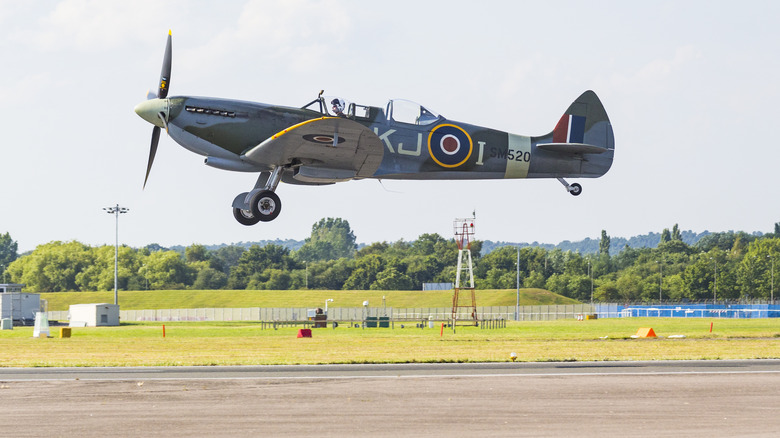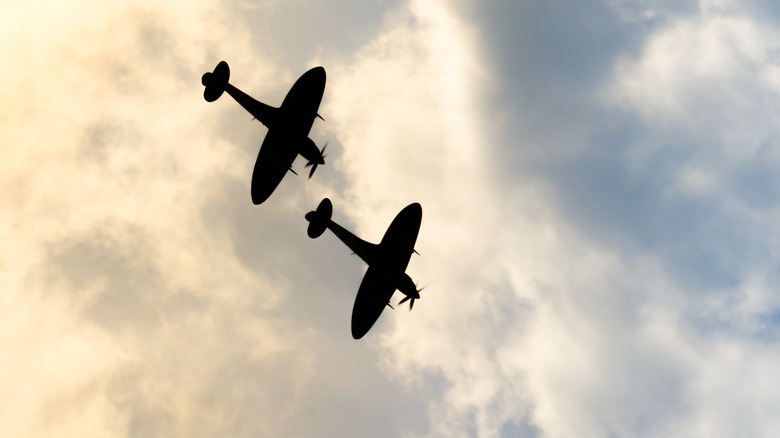Why The Supermarine Spitfire Was One Of The Most Innovative WW2 Planes
World War II, over its six-year span, saw the death of approximately 85 million people. In the name of victory, for defense and offense, nations developed creative new ways to fight, from the sea, on land, and, of course, in the air.
The British arsenal in particular, as the conflict wore on, grew to include the likes of the somewhat unreliable Crusader tank. The island country also developed some truly iconic fighter planes, with the Supermarine Spitfire perhaps being one of the most recognizable military vehicles of the war. Its distinctive appearance notwithstanding, the Spitfire boasted many unique traits that contributed to its effectiveness in the domain of the sky.
It was a remarkable aircraft for a terrible, unprecedented time. Here's a look at the creativity that went into the fighter's design, exactly what it was capable of, and just how important it proved to be to the British and to the wider Allies' war effort.
Developing the Supermarine Spitfire
Early in the 1930s, Air Ministry Specification F7/30 was issued. It was an ambitious call for the industry to manufacture a fighter that was equal parts heavily-armed and quick. Specifically, the benchmarks to hit were 250 miles per hour with a full complement of four guns.
Vickers Supermarine's initial submission was not successful, but through a series of prototypes and improvements (one being the implementation of Rolls-Royce's PV-XII V12 engine), the soon-to-be Supermarine Spitfire took shape and to the skies. A prototype, dubbed K5054, went up in the air in March 1936, and further developments only enhanced its potential. Rather more than was sought, a top speed of 250 mph and four guns, the Spitfire that would enter service could reach 348 mph and was equipped with twice that number of Browning guns.
It was a potent aircraft and a powerful weapon to wield. As such, it outshone other aircraft in the arsenals of the world during the conflict, including its British-built fellow, the Hawker Hurricane. As historian Paul Beaver put it to the BBC, the aircraft "had a certain mystique about it," and opposing forces would claim they'd been defeated by a Spitfire rather than admit it was a Hurricane. The unique, innovative, and characteristic design went a long way to securing the Spitfire's place in aviation history.
The innovation at the heart of the Spitfire
In designing a heavily-armed yet aerodynamic aircraft, one of Supermarine's most important considerations was that of material and form factor. The approach was to limit sharp angles and to utilize metals in an ingenious way. Structurally vulnerable yet crucial areas, of course, were reinforced. Meanwhile, it boasts a "semi-monocoque" construction and rib cage-esque pattern across its body frame, perforated with numerous holes. This enhanced the aircraft's overall performance by reducing its weight, while the smoothness limited the influence of drag. In this way, the Spitfire was quite a lightweight package, with the very common Mark IA model weighing in at 5,935 lb.
Further bolstering its performance, the supercharger the engine was equipped with allowed for more stable performance across a range of altitudes, something particularly challenging for other aircraft of the time period. All of this meant that the Spitfire was a very versatile aircraft, and successive variants would assume a variety of roles. The 1942 HF Mark VII, for instance, was intended to outmaneuver and eliminate opposing bombers using twin hispano cannons, while the PR Mark 19 was an unarmed recon vehicle.
Though twice as many Hawker Hurricanes as Spitfires were deployed in the pivotal Battle of Britain, the latter was a crucial tool in the Allies' arsenal. Over 20,000 Spitfires were produced, a number that remains a British military record.


